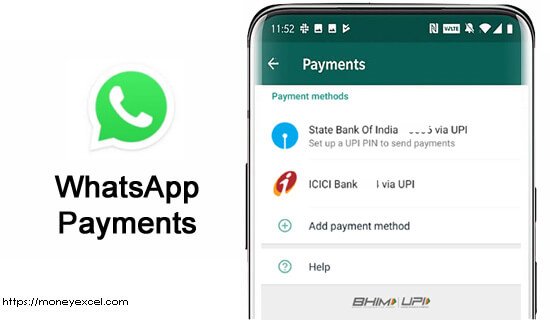The Post-Roe Landscape: Examining The Significance Of OTC Birth Control

Table of Contents
Increased Access and Reduced Barriers
The current system presents significant obstacles to accessing birth control, particularly for vulnerable populations. Over-the-counter birth control offers a crucial solution by reducing these barriers.
Financial Barriers
Prescription birth control can be prohibitively expensive, placing a significant burden on individuals and families, especially those with low incomes. The cost varies widely depending on the method, insurance coverage, and location.
- Statistics: Studies show that the annual cost of hormonal birth control can range from hundreds to thousands of dollars, even with insurance. Many low-income individuals forgo contraception due to cost.
- Impact: Financial barriers disproportionately affect low-income individuals and families, limiting their ability to plan their families and impacting their overall health and well-being.
- Potential: OTC birth control, with its potentially lower price point, could dramatically increase utilization rates among those currently unable to afford prescription methods, leading to better reproductive health outcomes.
Geographic Barriers
Many Americans, particularly those living in rural areas or underserved communities, face significant geographic barriers to accessing healthcare providers who can prescribe birth control. These "healthcare deserts" leave individuals with limited options.
- Statistics: Data reveals a significant disparity in healthcare access between urban and rural areas, with many rural communities lacking sufficient numbers of gynecologists or family planning clinics.
- Ease of Access: Pharmacies, on the other hand, are far more widely distributed, making OTC birth control readily accessible even in remote areas.
- Potential: Wider availability through pharmacies could significantly increase contraceptive use in underserved areas, closing the gap in reproductive health equity.
Time Barriers
Obtaining prescription birth control requires scheduling appointments, waiting for appointments, and potentially experiencing delays in prescription refills. This time commitment can be a significant barrier for busy individuals.
- Time Commitment: Scheduling appointments, waiting times, and potential prescription refill delays all contribute to a significant time investment in obtaining birth control.
- Convenience: OTC birth control offers significantly increased convenience, allowing individuals to obtain contraception without the need for appointments or lengthy wait times.
- Improved Access: This convenience can lead to increased utilization rates and better adherence to contraceptive regimens.
Public Health Implications of OTC Birth Control
Broadening access to OTC birth control has profound positive impacts on public health.
Reduced Unintended Pregnancies
Increased access to contraception is directly linked to lower rates of unintended pregnancies. This has cascading effects on individual lives and society as a whole.
- Statistics: Studies consistently demonstrate a correlation between increased contraceptive access and decreased rates of unintended pregnancies.
- Impact: Reducing unintended pregnancies leads to lower rates of abortion, fewer maternal health complications, and reduced reliance on public assistance programs.
- Economic Benefits: The economic benefits of reduced unintended pregnancies are substantial, including savings in healthcare costs and social welfare programs.
Improved Sexual and Reproductive Health Outcomes
Beyond pregnancy prevention, increased contraceptive use contributes to better overall sexual and reproductive health.
- Reduced STIs: Consistent contraceptive use can help reduce the spread of sexually transmitted infections (STIs).
- Family Planning: Access to contraception empowers individuals to make informed choices about family planning, aligning their reproductive decisions with their life goals.
- Empowerment: Access to readily available birth control promotes greater autonomy and control over reproductive health.
Addressing Health Disparities
OTC birth control offers a vital tool for reducing health disparities in reproductive healthcare.
- Underserved Communities: It can address existing inequities in access to care, particularly within underserved communities and minority populations.
- Racial and Ethnic Minorities: Data shows significant disparities in reproductive healthcare access based on race and ethnicity; OTC birth control can help mitigate these disparities.
- Equity: Making birth control readily available can lead to a more equitable distribution of reproductive healthcare services, promoting health equity.
Potential Challenges and Concerns Regarding OTC Birth Control
While the benefits of OTC birth control are significant, potential challenges must be addressed proactively.
Misinformation and Misuse
The safe and effective use of OTC birth control requires accurate information and education. Misinformation and incorrect usage can lead to unintended pregnancies or other health risks.
- Education: Comprehensive education campaigns are crucial to ensure individuals understand how to use OTC birth control correctly and safely.
- Clear Labeling: Clear and accessible labeling on OTC birth control products is essential to minimize the risk of misuse.
- Accessibility: Providing easily accessible and reliable information through various channels is critical to promoting safe and effective use.
Regulatory Considerations
The process of making birth control available over-the-counter involves significant regulatory hurdles.
- FDA Approval: Securing FDA approval for OTC availability requires rigorous testing and review.
- Political Obstacles: Political factors can significantly influence the regulatory process, creating potential obstacles to OTC access.
- Advocacy: The role of advocacy groups in navigating the regulatory landscape and promoting OTC access is critical.
Ensuring Equitable Access
Strategies to ensure equitable access to OTC birth control are vital to maximize its public health benefits.
- Government Subsidies: Government programs could help reduce the cost of OTC birth control, making it more affordable for low-income individuals.
- Community Outreach: Community outreach programs can play a crucial role in educating individuals about OTC birth control options and promoting access.
- Addressing Cost Barriers: Addressing cost barriers through various initiatives is essential to ensure that OTC birth control is truly accessible to all.
Conclusion
The post-Roe landscape underscores the critical importance of increasing access to over-the-counter birth control. By removing financial, geographic, and time barriers, OTC birth control offers a vital pathway to improved reproductive health outcomes, reduced unintended pregnancies, and a more equitable healthcare system. Addressing potential challenges through robust education and equitable access initiatives is crucial to realizing the full public health benefits of readily available OTC birth control. Advocate for policies that support wider access to affordable and convenient over-the-counter birth control options and help ensure reproductive freedom for all. Let's work together to make OTC birth control a reality for everyone who needs it.

Featured Posts
-
 Urgent Action Needed The Overvalued Canadian Dollar And Its Economic Impact
May 08, 2025
Urgent Action Needed The Overvalued Canadian Dollar And Its Economic Impact
May 08, 2025 -
 Uber Auto Payments Is Upi Still Available A Complete Guide
May 08, 2025
Uber Auto Payments Is Upi Still Available A Complete Guide
May 08, 2025 -
 Car Dealerships Renew Their Resistance To Electric Vehicle Requirements
May 08, 2025
Car Dealerships Renew Their Resistance To Electric Vehicle Requirements
May 08, 2025 -
 The Mystery Planet Of Star Wars A 48 Year Old Enigma Solved
May 08, 2025
The Mystery Planet Of Star Wars A 48 Year Old Enigma Solved
May 08, 2025 -
 Catholic Church Conclave A New Pope To Be Chosen
May 08, 2025
Catholic Church Conclave A New Pope To Be Chosen
May 08, 2025
